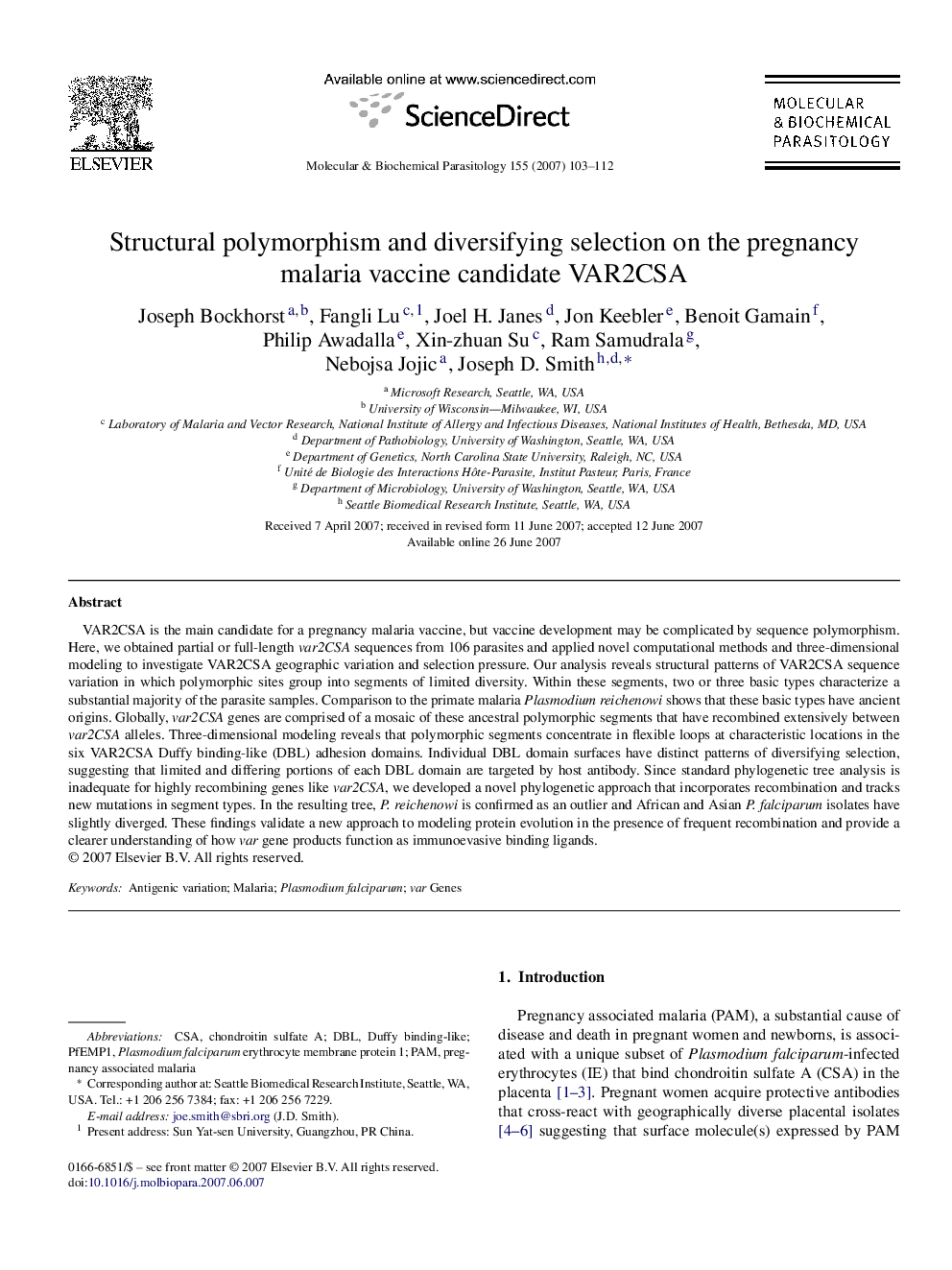| Article ID | Journal | Published Year | Pages | File Type |
|---|---|---|---|---|
| 5916116 | Molecular and Biochemical Parasitology | 2007 | 10 Pages |
Abstract
VAR2CSA is the main candidate for a pregnancy malaria vaccine, but vaccine development may be complicated by sequence polymorphism. Here, we obtained partial or full-length var2CSA sequences from 106 parasites and applied novel computational methods and three-dimensional modeling to investigate VAR2CSA geographic variation and selection pressure. Our analysis reveals structural patterns of VAR2CSA sequence variation in which polymorphic sites group into segments of limited diversity. Within these segments, two or three basic types characterize a substantial majority of the parasite samples. Comparison to the primate malaria Plasmodium reichenowi shows that these basic types have ancient origins. Globally, var2CSA genes are comprised of a mosaic of these ancestral polymorphic segments that have recombined extensively between var2CSA alleles. Three-dimensional modeling reveals that polymorphic segments concentrate in flexible loops at characteristic locations in the six VAR2CSA Duffy binding-like (DBL) adhesion domains. Individual DBL domain surfaces have distinct patterns of diversifying selection, suggesting that limited and differing portions of each DBL domain are targeted by host antibody. Since standard phylogenetic tree analysis is inadequate for highly recombining genes like var2CSA, we developed a novel phylogenetic approach that incorporates recombination and tracks new mutations in segment types. In the resulting tree, P. reichenowi is confirmed as an outlier and African and Asian P. falciparum isolates have slightly diverged. These findings validate a new approach to modeling protein evolution in the presence of frequent recombination and provide a clearer understanding of how var gene products function as immunoevasive binding ligands.
Keywords
Related Topics
Life Sciences
Biochemistry, Genetics and Molecular Biology
Molecular Biology
Authors
Joseph Bockhorst, Fangli Lu, Joel H. Janes, Jon Keebler, Benoit Gamain, Philip Awadalla, Xin-zhuan Su, Ram Samudrala, Nebojsa Jojic, Joseph D. Smith,
